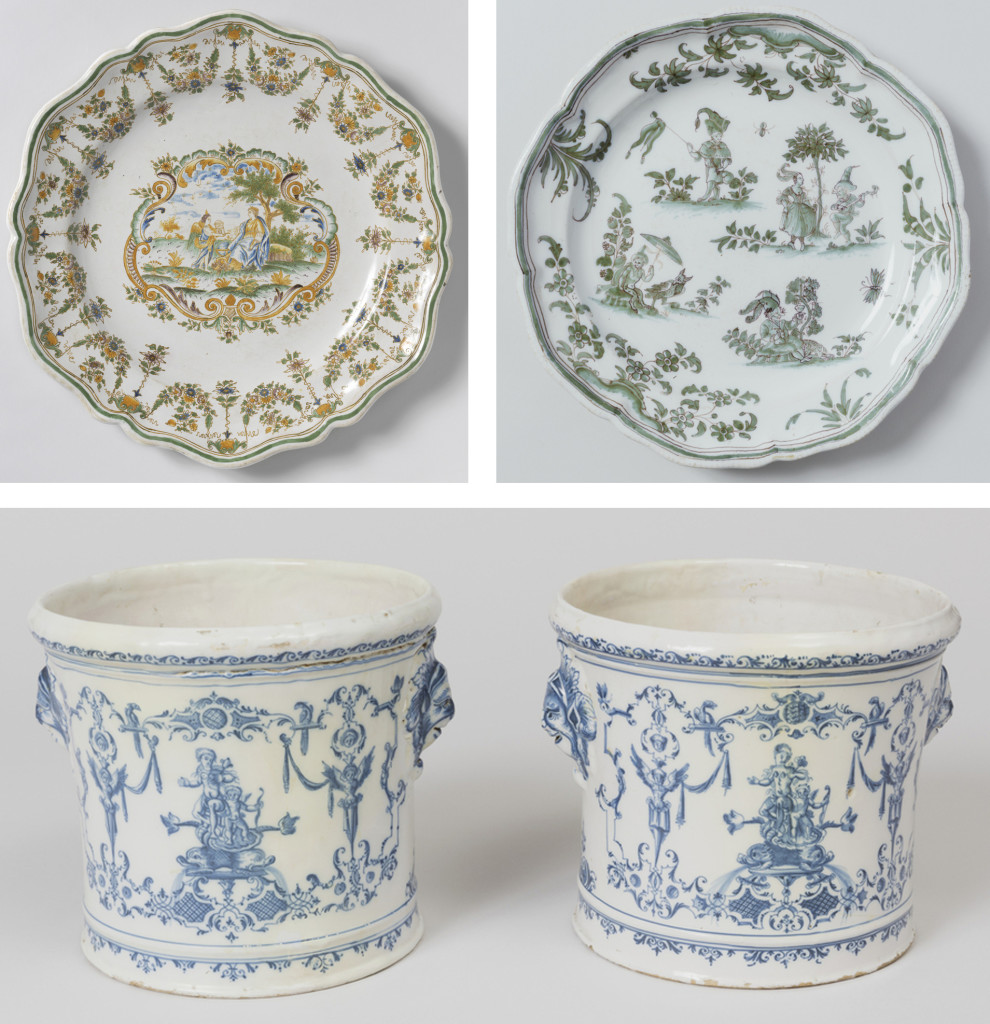Passion for collecting, from past to present, is the decorative arts focus in New York this season. Just as they did for pre-eminent collectors Bunny Mellon, Clare & Eugene Thaw and Ronald Lauder, the beauty of the finest materials and the unique hand of the artist will captivate and instill an intimate connection. Visiting these three exhibitions, get ready to be inspired and create a new collection of your own.
The Winter Antiques Show
Loan Exhibit: Virginia Museum of Fine Arts, Richmond
Park Avenue Armory
Through January 28
http://winterantiquesshow.com/2018-loan-exhibition/
Wiener Werkstätte 1903-1932: The Luxury of Beauty
Neue Gallery
Through January 29
http://www.neuegalerie.org/content/wiener-werkst%C3%A4tte-1903-1932-luxury-beauty
Moustiers Ceramics: Gifts from the Eugene V. and Clare E. Thaw Collection
Cooper Hewitt
Through April 29
https://www.cooperhewitt.org/channel/moustiers/
As Wendy Goodman, Design Editor of New York Magazine, recently described the Winter Antiques Show, “this is where we go to fall in love”… Exploring the Show, you will be drawn to everything from objects as portable as the 19th c. Italian bronze carnival mask mold, c. 1870 from the Angus Wilkie’s Cove Landing to something as large as a hand colored lithograph map of Manhattan,1908 , over 25 feet in length at the dealer Daniel Crouch Rare Books. A creation of the iconic cabinet maker himself, an important George III giltwood mirror by Thomas Chippendale, is located at the booth of the famed London furniture dealer Ronald Phillips. As you depart, make sure to spend time at the Loan Exhibit featuring highlights from the Virginia Museum of Fine Arts, Richmond. You won’t want to miss the highlights from it’s decorative arts collection trifecta: the Gans Silver, the Pratt Faberge and it’s most recent addition- Bunny Mellon’s gift of over 135 piece of Schlumberger jewelry.

Enjoy the opulent aesthetic of Wiener Werkstätte 1903-1932: The Luxury of Beauty at the Neue Gallery, collector Ronald Lauder’s jewel box of German-Austrian fine and decorative art c. 1890-1940. This exhibition is resplendent with over 400 objects of the Wiener Werkstätte (Vienna Workshops), an artists’ and craftsmens’ collective that existed in Vienna from 1903 until 1932. This show, the first major survey of the Wiener Werkstätte held in the US, includes the entirety of the firm’s extensive output in a variety of media, including ceramics, drawings, fashion, furniture, glass, graphic design, jewelry, metalwork, textiles, and wallpaper. Special highlights of the show include iconic examples of furniture by Josef Hoffmann and Koloman Moser, and is complemented by unique works crafted in silver, gold, and semiprecious stones that convey the Wiener Werkstätte’s luxurious aesthetic, a group of that sought to end the hierarchy between fine and decorative arts.

Visiting the Cooper Hewitt, spend time with the Thaw’s intimate and important collection at Moustiers Ceramics: Gifts from the Eugene V. and Clare E. Thaw Collection. As the late collector, dealer and mentor Eugene Thaw explained “great art collecting need not be based on a great fortune – education, experience and eye are more important”. The Thaws’ lifetime of collecting reflected broad interests including both fine and decorative arts, from old master drawings to American Indian art. One of their collections was early Moustiers faience. Production of this French tin-glazed earthenware, made by factories in the town of Moustiers from late 17th to 19th centuries, proliferated as a result of a series of edicts from King Louis XIV requiring French nobility to melt their silver table services to fund French war efforts. The Moustiers wares manufactured in the 17th and 18th centuries were so distinctive, and of such high quality, that they were extensively copied. Highlights include a pair of blue and white cachepots, c. 1730 by the factory of Antoine Clérissy, the local potter who established the most important factory in Moustiers and founded a dynasty of faïenciers active until the late 18th century.




